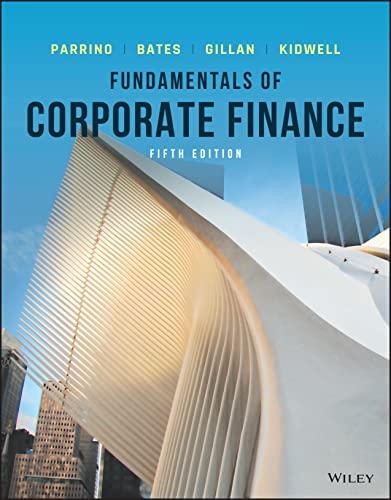Answered step by step
Verified Expert Solution
Question
1 Approved Answer
For project 1, if costs across all years went to 55% of sales revenues, what would be the new NPV? If this scenario, sensitivity or



For project 1, if costs across all years went to 55% of sales revenues, what would be the new NPV? If this scenario, sensitivity or simulation analysis?
You are the Chief Financial Officer and lead Project Development President for a snack. You are presented with a few options about what to do next for value-creation from your teams. However, you must evaluate each project and then make the ultimate choice on the project acceptance. The firm you work for is a large publicly traded company. It currently has 10,000,000 shares outstanding and 200,000 bonds outstanding. The company's most recently paid dividend was $3 per share, this dividend grows at 3% per year indefinitely. You also know that the company's current share price is $45. You also know that the beta of the firm is 1.2 and the expected return on the market is 9%. The most current rate offered on a T-bill was 1.9%. The bonds for the firm were all issued on the same day in the past, November 2010, and have a maturity date of November 2040. They pay 8% coupons, are paid semiannually, and were originally sold at full par value. These bonds possess an attractive yield and are currently priced at a premium, $1,200. The company tax rate is 21%. Project 1: This new project will create avocado chips. It will cost $25,000,000 today for a new building and machines. We would invest in NWC equivalent of 10% of capital expenditure cost today. We know that this project will bring in sales of $14,000,000 in the first year, growing at a rate of 25% for the first 2 years and growing at a rate of 12% for the next 4 years. We employ a MACRS 7-year depreciation scale for all CAPEX. In year-end 3, we will have to purchase $9,000,000 in new machines. Net working capital account will be 25% of sales for each year. Costs of goods sold will be 50% of sales until we get the new machines at which they will drop to 38% of sales. After year 6, we are quitting the entire project and liquidating all, we can sell the original machines for $4million and the new machines for $4million. This project is in line with a new product division that has similar risk levels to existing operations. 1 2 3 4 5 6 7 8 0.1429 0.1749 0.1249 0.0892 MACRS 7-year MACRS 20-year 0.2449 0.07219 0.0893 0.05713 0.0893 0.0488 0.0446 0.04522 0.0375 0.06677 0.06177 0.05285 You are the Chief Financial Officer and lead Project Development President for a snack. You are presented with a few options about what to do next for value-creation from your teams. However, you must evaluate each project and then make the ultimate choice on the project acceptance. The firm you work for is a large publicly traded company. It currently has 10,000,000 shares outstanding and 200,000 bonds outstanding. The company's most recently paid dividend was $3 per share, this dividend grows at 3% per year indefinitely. You also know that the company's current share price is $45. You also know that the beta of the firm is 1.2 and the expected return on the market is 9%. The most current rate offered on a T-bill was 1.9%. The bonds for the firm were all issued on the same day in the past, November 2010, and have a maturity date of November 2040. They pay 8% coupons, are paid semiannually, and were originally sold at full par value. These bonds possess an attractive yield and are currently priced at a premium, $1,200. The company tax rate is 21%. Project 1: This new project will create avocado chips. It will cost $25,000,000 today for a new building and machines. We would invest in NWC equivalent of 10% of capital expenditure cost today. We know that this project will bring in sales of $14,000,000 in the first year, growing at a rate of 25% for the first 2 years and growing at a rate of 12% for the next 4 years. We employ a MACRS 7-year depreciation scale for all CAPEX. In year-end 3, we will have to purchase $9,000,000 in new machines. Net working capital account will be 25% of sales for each year. Costs of goods sold will be 50% of sales until we get the new machines at which they will drop to 38% of sales. After year 6, we are quitting the entire project and liquidating all, we can sell the original machines for $4million and the new machines for $4million. This project is in line with a new product division that has similar risk levels to existing operations. 1 2 3 4 5 6 7 8 0.1429 0.1749 0.1249 0.0892 MACRS 7-year MACRS 20-year 0.2449 0.07219 0.0893 0.05713 0.0893 0.0488 0.0446 0.04522 0.0375 0.06677 0.06177 0.05285Step by Step Solution
There are 3 Steps involved in it
Step: 1

Get Instant Access to Expert-Tailored Solutions
See step-by-step solutions with expert insights and AI powered tools for academic success
Step: 2

Step: 3

Ace Your Homework with AI
Get the answers you need in no time with our AI-driven, step-by-step assistance
Get Started


